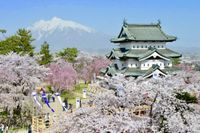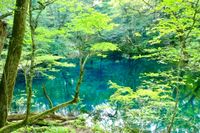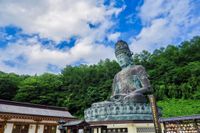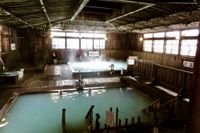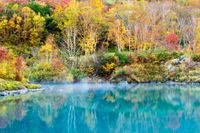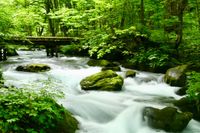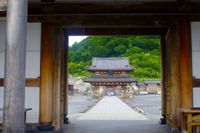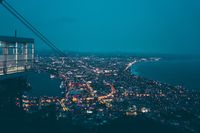Takayama Inari Shrine
青森県/つがる市

Description
This is an Inari shrine with an unknown construction date. It is said to house the God known as Ukanomitama, the main God, with Satahiko and Omiyanome as the other inhabiting Gods. Inside the traditional Japanese park, there are around 200 orange/red colored Torii gates as well as a fox statue, which is said to be a servant to the temple Gods, creating an atmosphere that can bring a true feeling of closeness to the holy spirits.
Homepage
Address
Nearby Car Night Spots
Nearby Activities
There is no nearby activities
Ranking Stations
(Bonfire BBQ) Chita Mihama Noma Beach Station
¥3,500〜
/ per nightAichi Noma, Mihamacho, Chita County
4.7
(42)Vanlife BASE | 45 min. from Narita Airport / Perfect for campervan travel/A seaside town rich in nature/Japanese countryside town/welcome traveler
¥7,000〜
/ per nightChiba Koseki, Kujukuri-machi, Sambu-gun
5.0
(61)Nearby Drive Spots
Hirosaki Castle
This castle was established by Tsugaru clan in 1611, from 47,000 stones. It is named as one of Japan's 7 famous castles by Shiba Ryotaro, and is one of 12 remaining castle towers in Japan. In the lower area of Hirosaki Park, here are around 2,600 cherry blossom trees which bloom every year in May, attracting many visitors.
Shirakami Sanchi
This is a mountainous area that stretches from Aomori to Akita prefecture, and home to the largest natural beech tree forest. This area was the first in Japan to be registered as a UNESCO world heritage site. The black woodpecker, can also be seen here. The area is also famous for its clear blue pond.
Seiryuji Temple Showa Daibutsu
This is a buddha statue that was inaugurated in 1984 by Oda Ryukou. AT a height of 21 meters, it is the tallest bronze statue in Japan, and is said to be a buddha statue of Dainichinyorai, a teacher of Buddhism. Seiryuji Temple is said to have been built as an Aomori branch temple of Mount Takao, with the golden room built in 1992, a five storied pagoda built in 1996, and the main hall completed in 1998.
Sukayu Onsen
This is an onsen by the volcanic Mount Hakkoda. This onsen is famous for "Sennin Buro" which has two different types of Onsen bath tubs - the regular warm water onsen bath as well as the "shi-bu-roku-bu" type. This type initially feels hotter than the regular type, but the feeling of warmth is shorter. This onsen boasts a long history having opened in 1684, and despite it being situated deep in the mountain, it has always been popular with visitors.
Jigoku Pond
This area was formed the crater of Hakkoda Volcano in Sukayu Onsen Village. Even now, sulphuric gases still rise from the area and can be smelt, with water around 70-90 degrees spraying out of the swamp. The place almost feels like the depths of a hellish landscape. However the area is also famous for autumn leaves.
Oirase Gorge
This is a mountain stream from the Oirase River that runs for about 14 km in Towada Hachimantai National Park. A number of waterfalls are scattered along this mountain stream, including Choshi Falls. This road is also sometimes known as the "waterfall highway". Many tourists visit to see the fresh green and autumn leaves.
Osorezan Bodaiji Temple
This is a temple that was built in 862 AD by Ennin of Tendai sect , and one of Japan's three sacred sites. It is believed that this is a place where dead spirits of the Osorezan mountain gather. It is also famous for the summoning of a female priest named "Itako". At the entrance of the mountain there are the "three rivers", and it is said that if you cross the bridge, that a post life world awaits, known as the "136 hells". The bridge is said not to be passable to those who are evil.
Mount Hakodate
This is a 334m high mountain in Hakodate city. The mountain peak can be accessed by rope way, and one can witness the stunning night views of Hakodate - one of the three famous night viewing spots of Japan. The shape of the mountain also looks like a sleeping cow, which is why the mountain also has the nickname of "large cow mountain".










